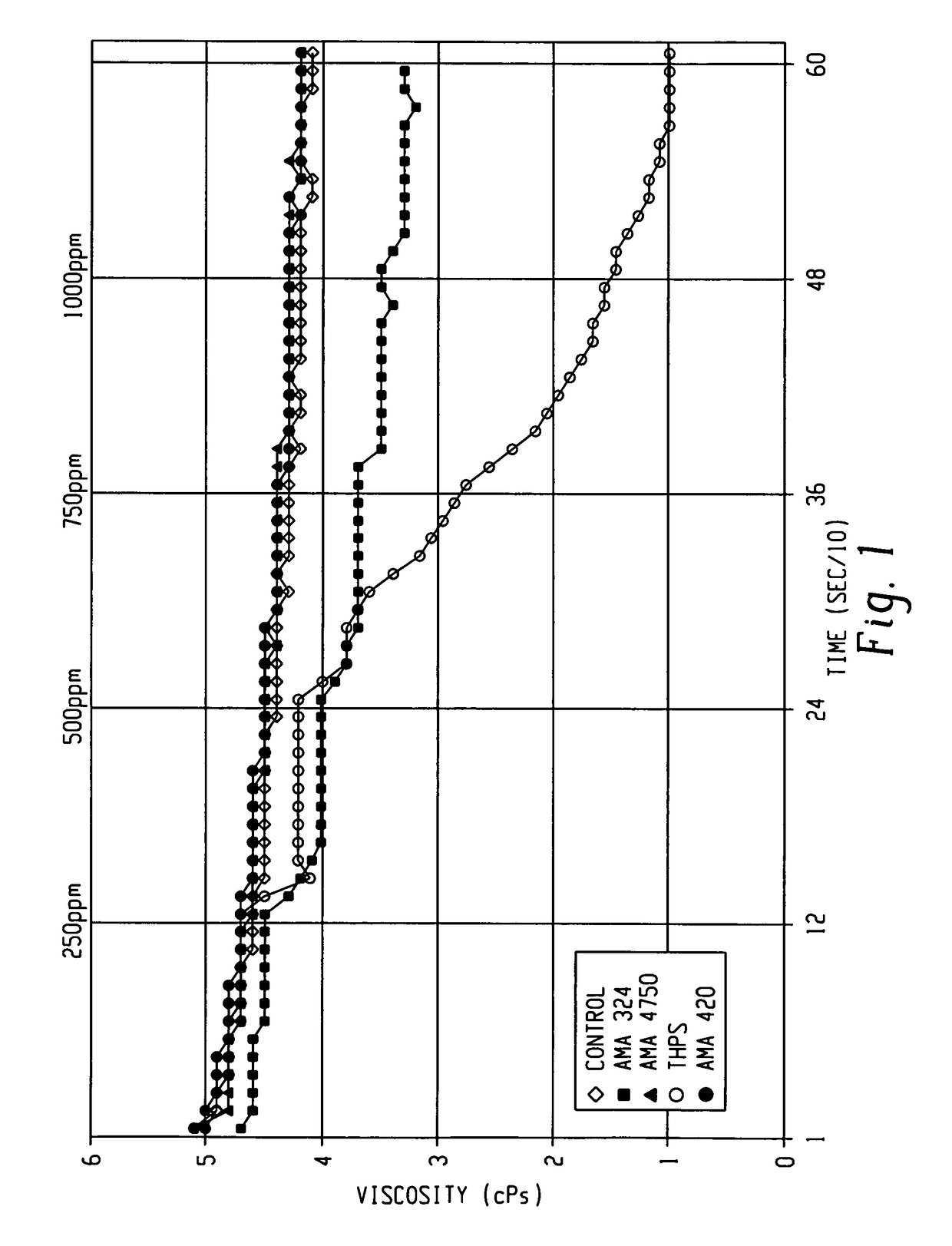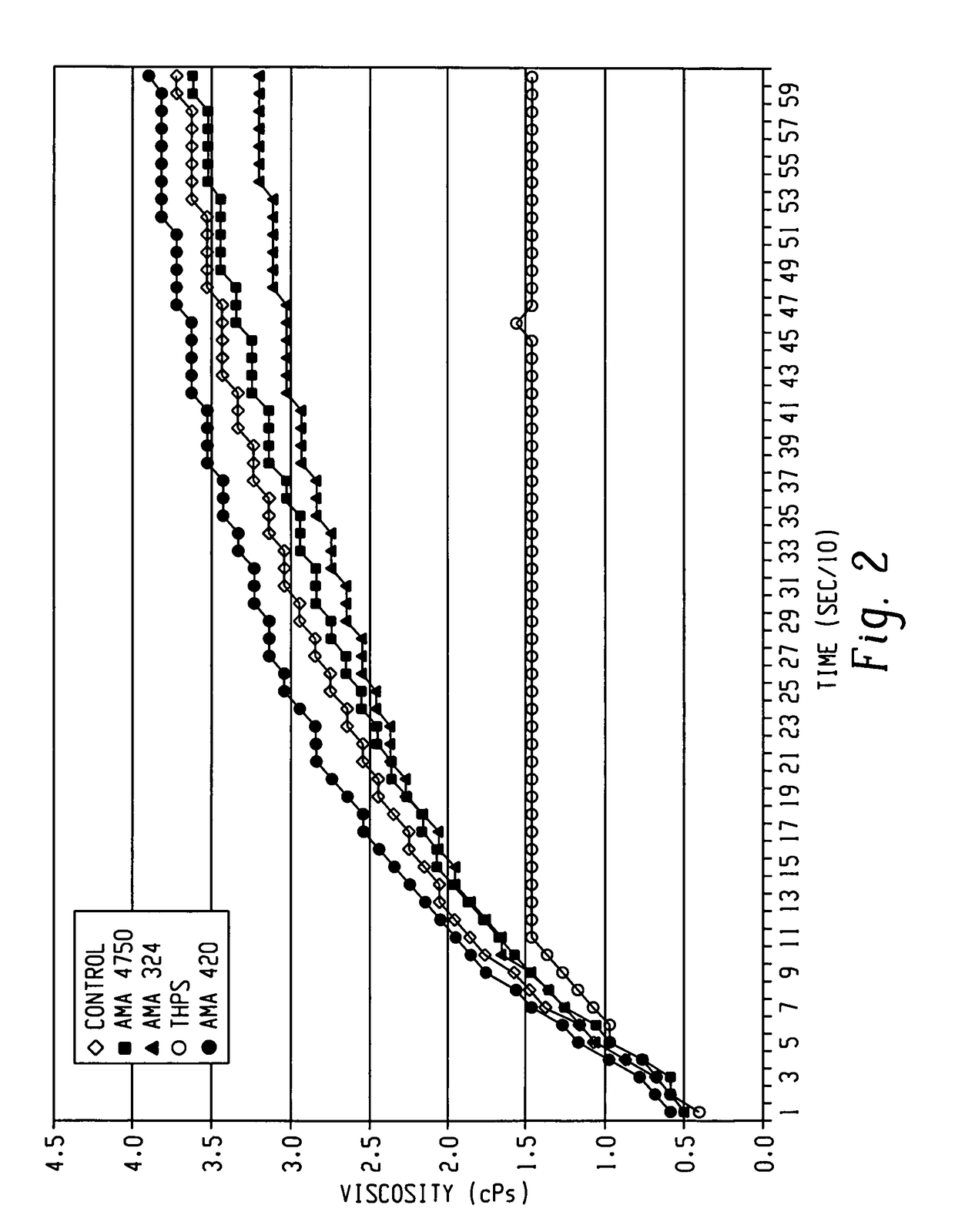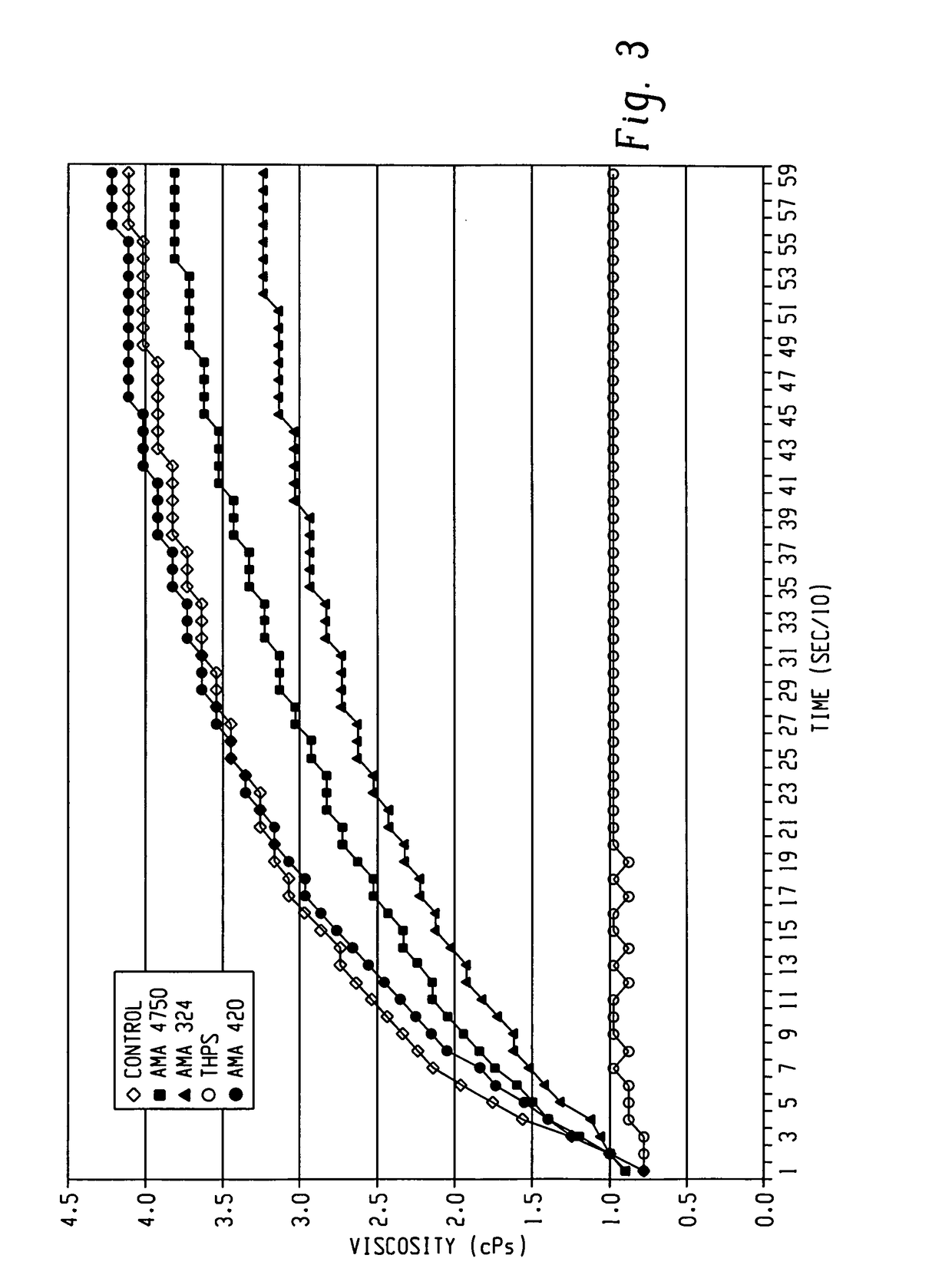Biocide for well stimulation and treatment fluids
a technology of well stimulation and fluid treatment, which is applied in the field of biocide, can solve the problems of loss of viscosity and subsequent ineffectiveness of fluids, polymer is susceptible to oxidative degradation, and can be problematic, so as to inhibit bacterial growth, inhibit bacterial contamination, and inhibit bacterial growth
- Summary
- Abstract
- Description
- Claims
- Application Information
AI Technical Summary
Problems solved by technology
Method used
Image
Examples
example 1
[0029]In this example, the post inversion viscosity of a polymeric fluid having a biocide at different concentrations was analyzed relative to a control that did not include a biocide. The biocides analyzed included glutaraldehyde obtained commercially under the trade name AMA-4750, THPS, 3,5-dimethyl-1,3,5-thiadiazinane-2-thione obtained commercially under the trade name AMA-324, and an emulsion of 3,5-dimethyl-1,3,5-thiadiazinane-2-thione obtained commercially under the trade name AMA-420. A 0.1% aqueous stock solution of polyacrylamide commercially obtained under the trade name Callaway 4330 was made and allowed to age for about 30 minutes. For each of the samples tested, 1,500 grams of the stock solution was first added to the inversion loop, recirculated, and the viscosity measured. After 2 minutes, the biocide was added at an initial concentration of 250 parts per million (ppm) and allowed to recirculate for 2 minutes at which time the viscosity was recorded. Additional 250 pp...
example 2
[0031]In this example, pre-inversion viscosity was measured for the various biocide / polymer fluids and control of Example 1, which were prepared in accordance with Example 1. In those samples containing the biocide, the biocide concentrations examined were 500 ppm and 1,000 ppm. The results are shown in FIGS. 2 and 3, respectively.
[0032]The results clearly show that THPS interacts with the polymer resulting in a significant decrease in viscosity. In contrast, the glutaraldehyde and the samples containing the 3,5-dimethyl-1,3,5-thiadiazinane-2-thione biocide showed minimal interaction relative to the control sample. Interestingly, the emulsified 3,5-dimethyl-1,3,5-thiadiazinane-2-thione exhibited an increase in viscosity relative to the control. While not wanting to be bound by theory, the components used to form the emulsion are believed to react with or interact with the polymer.
example 3
[0033]In this example, the effect of heat on the biocide / polymer fluids and control of Example 1 was analyzed. THPS was not analyzed because of its observed interaction at room temperature in the earlier examples. For each of the samples that were tested, 500 ppm of the biocide was added to 1,000 grams of the polyacrylamide stock solution of Example 1. The samples were added to the inversion loop, recirculated for 1 minute, and the viscosity measured. The samples were then placed into an oven at 180° F. for 4 hours, and were allowed to cool to room temperature (77° F.). Once the samples were at room temperature, the viscosity was measured and then return to the oven for an additional 4 hours at which the time sample was cooled to room temperature and the viscosity measured. The results are shown in FIG. 4.
[0034]From the results above, it can be noted that polymer viscosity degrades with heat over time. For each test, the initial viscosity measurement shows only the effect of the bio...
PUM
| Property | Measurement | Unit |
|---|---|---|
| temperature | aaaaa | aaaaa |
| pH | aaaaa | aaaaa |
| temperature | aaaaa | aaaaa |
Abstract
Description
Claims
Application Information
 Login to View More
Login to View More - R&D
- Intellectual Property
- Life Sciences
- Materials
- Tech Scout
- Unparalleled Data Quality
- Higher Quality Content
- 60% Fewer Hallucinations
Browse by: Latest US Patents, China's latest patents, Technical Efficacy Thesaurus, Application Domain, Technology Topic, Popular Technical Reports.
© 2025 PatSnap. All rights reserved.Legal|Privacy policy|Modern Slavery Act Transparency Statement|Sitemap|About US| Contact US: help@patsnap.com



